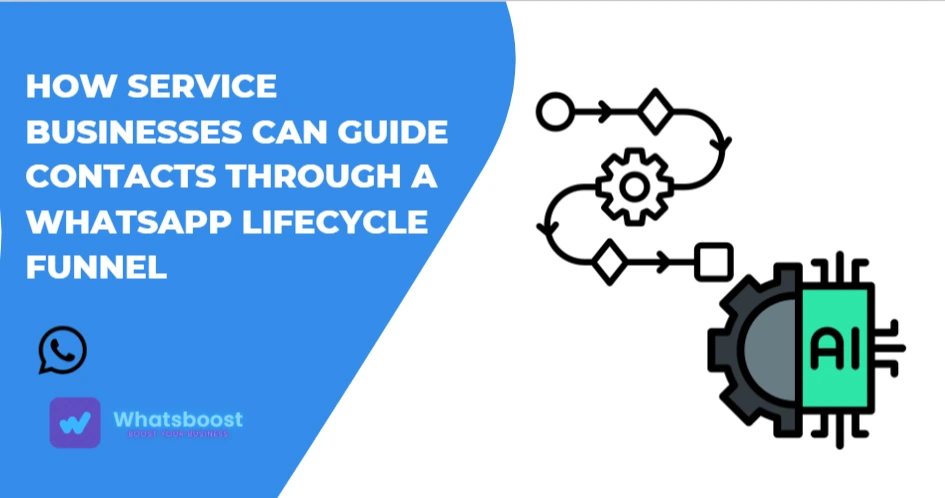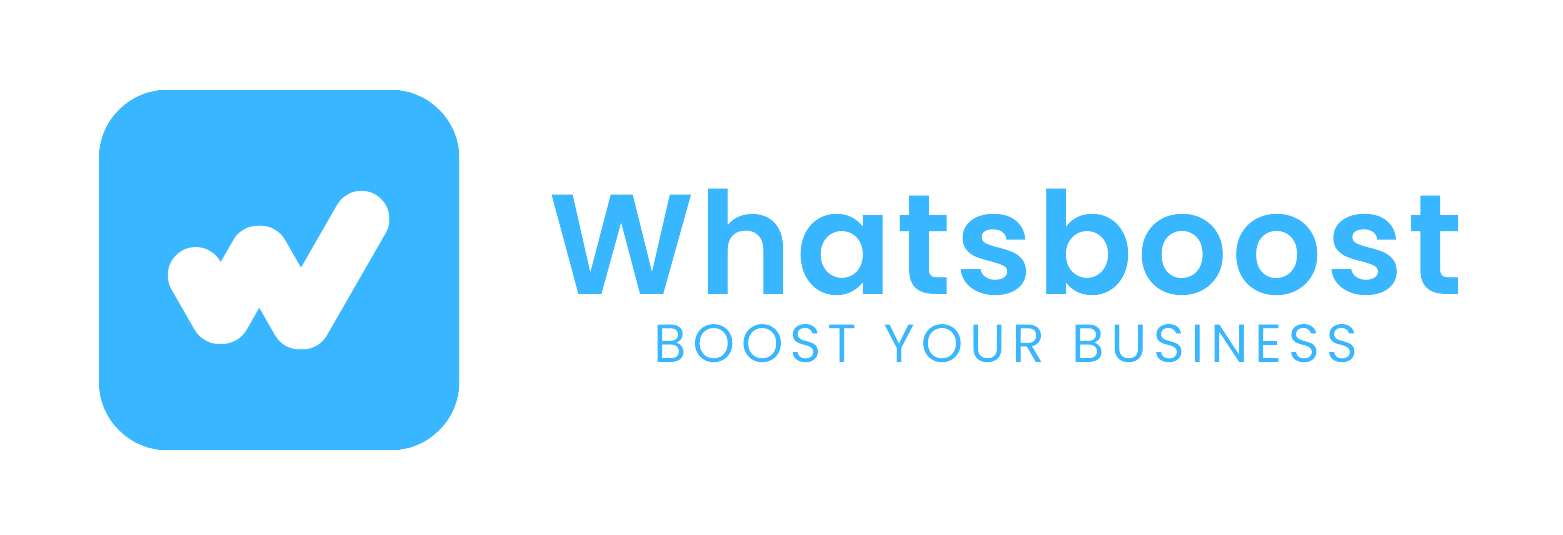
How Service Businesses Can Guide Contacts Through a WhatsApp Lifecycle Funnel
Discover a practical guide for service-based businesses—coaches, consultants, solopreneurs—on mapping a WhatsApp lifecycle funnel. Learn actionable steps to move contacts from lead to engaged prospect, paying customer, and loyal advocate using personalised messages, segmenting, and automation techniques. Build trust, boost conversion, and grow your client base with efficient WhatsApp strategy.
If you run a small service business—whether a tuition class, coaching practice, consultancy or agency—you know the value of a personal connection. A message arrives, a chat begins, a relationship starts.
But without a structured path, that conversation may lead nowhere. What if you could map a clear funnel on WhatsApp that moves someone from first contact → engaged prospect → paying client → loyal advocate?
In this article you’ll learn how to build that journey, with clear stages, messages and triggers tailored for your business.
Why a WhatsApp Lifecycle Funnel Makes Sense
WhatsApp isn’t just another broadcast channel—it’s a conversation platform. It offers higher open and response-rates compared to email or generic messaging.
For service-businesses where trust, responsiveness and personal touch matter, mapping a lifecycle funnel on WhatsApp brings three key benefits:
-
Better alignment of messages to where the contact actually is: Rather than sending the same message to every number, you send the right message at the right time.
-
Higher conversion and retention: By nurturing relationships instead of only reacting, you guide a contact more reliably toward becoming a client and then a promoter.
-
Scalable yet personal: Once your funnel is defined, you can automate core steps but still keep the tone human.
Defining the Four Stages for Service-Oriented Funnels
Here’s a breakdown of the four key lifecycle stages we’ll use—and how they apply to service businesses.
-
Lead
A contact who has shown interest: maybe they sent you a message, clicked a link, or gave you their number. They are not yet engaged actively but are in your orbit. -
Engager
This is where the lead responds, gives a bit of information, maybe agrees to a chat, or shows interest in your service. The goal here is to transition from “just curious” to “let’s talk”. -
Customer
The contact becomes a paying client: they sign up, purchase a service, or attend a session. The relationship is now transactional and you deliver value. -
Advocate
They’re happy with your service, maybe they refer others, leave a testimonial, or participate in your community. They actively help you grow.
Moving someone smoothly through these stages means tailoring your WhatsApp messages, triggers and actions for each step.
Building the Funnel: Step-by-Step
Let’s walk through how you can structure your WhatsApp funnel from top-to-bottom.
Stage 1 – Lead
Objective: Capture interest and obtain the contact.
What you do:
-
Use a “Chat on WhatsApp” button on your website or social post.
-
Deliver a welcome message instantly when a chat begins.
-
Ask a qualifying or interest-based question: “What’s the challenge you’re looking to solve?”
-
Tag the contact in your system as “Lead”.
Key tip: Keep the welcome message friendly and focused. Avoid pushing for a sale too early.
Stage 2 – Engager
Objective: Get a conversation started, deepen interest.
What you do:
-
Based on their answer, send a message that shows you understand their challenge.
-
Provide a small value-item (e.g., tip sheet, short voice note) via WhatsApp.
-
Invite them for a free discovery call or session.
-
Once they schedule or reply positively, tag them as “Engager”.
Why it works: At this stage the contact wants more than info—they want relevance. By using conversation you build trust and show you’re listening.
Stage 3 – Customer
Objective: Convert the engager into a paying client.
What you do:
-
After the call or conversation, send a clear proposal or offer.
-
Use WhatsApp to confirm booking, send payment links or schedule the service.
-
Deliver welcome/ onboarding message once they purchase.
-
Tag them as “Customer”.
Important note: This is where delivering value starts. WhatsApp can be used to reinforce the decision, set expectations, and reduce drop-off.
Stage 4 – Advocate
Objective: Turn your client into someone who helps your business grow.
What you do:
-
Send a message after a suitable period: “How’s everything going? Would you mind sharing your experience with a friend?”
-
Offer a referral reward or simple share link via WhatsApp.
-
Ask for a short testimonial or review.
-
Tag the contact as “Advocate”.
Outcome: You now have a loyal base who not only stays with you but helps bring in others.
Message Examples for Each Stage
Here are simplified message ideas you can adapt:
-
Lead: “Hi [Name]! Thanks for reaching out. Can you tell me your biggest challenge right now in [service area]? I’ll send you a tip that helps.”
-
Engager: “Thanks for sharing that. Based on what you said, I have a strategy I’d like to walk you through in a free 20-minute call. When’s a good time?”
-
Customer (after purchase): “Great to have you on board, [Name]! Your session is set for [Date]. I’ll send a reminder tomorrow. Meanwhile - here’s a quick note on what to prepare.”
-
Advocate: “Hi [Name], hope you’re seeing results! If you know someone who could benefit from this too, feel free to forward this WhatsApp link [referral link]. I’d love to help them.”
Tips to Make the Funnel Effective
-
Segment early: Use tags or labels (e.g., Lead, Engager, Customer, Advocate) so your messages match each stage.
-
Automate the repetitive, humanise the message: Use automation for triggers and reminders, but keep the content chat-like.
-
Monitor drop-off points: If many leads never move from “Lead” to “Engager”, revisit your question or call-invite. Tools show you where the funnel leaks.
-
Respect the medium: WhatsApp is personal. Don’t send too many messages, avoid generic blasts, keep tone conversational.
-
Use value in every stage: Till you become an advocate, each move must feel useful—from tip sheet to discovery call to onboarding to referral.
-
Ask for the advocate step at the right moment—once they’ve had a positive experience. That’s when a referral feels natural.
Common Mistakes & How to Avoid Them
-
Pushing sales in the lead stage: If you try to sell too early, you lose trust. Instead, focus on insight and engagement.
-
Single message fits all: A lead and a customer require very different messages. Tailor accordingly.
-
Ignoring post-purchase communication: Once someone becomes a customer, communications tend to stop. That’s when many businesses lose the advocacy opportunity.
-
Not tagging or tracking stages: Without stage tracking, you’ll send irrelevant messages and confuse your audience.
-
Too many messages too fast: WhatsApp users expect friendly interaction, not broadcast spam. Pace your communications.
Conclusion
Mapping a lifecycle funnel on WhatsApp—from lead → engager → customer → advocate—is not just for big brands. As a small service business, you can structure your conversations, win trust, and build relationships that grow your business.
By defining each stage, crafting messages that match where the contact is, and moving them gently but clearly toward the next step—you preserve the personal feel of WhatsApp while adding the clarity and discipline of a funnel.
Start simple, measure how many contacts move to the next stage, refine your messages, and you’ll turn more enquiries into advocates without losing your human touch.
Ready to build your own WhatsApp lifecycle funnel today? Just choose one contact pathway and map its steps; your next stage starts there.
